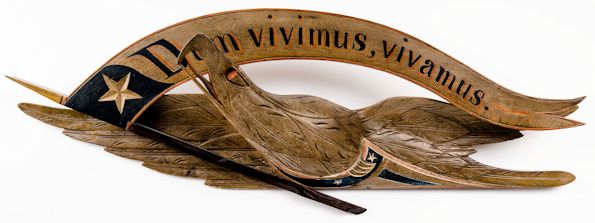|
How
they are made
· Specially formulated hard wax
is sculptured into a
model. The type of wax used for this purpose has been preferred by master
carvers and sculptors for many years because it can be sawed, filed or carved, will
stand rough handling and will not soften in the hands.
 |
·
The caster prepares the wax model, submerges it in
plaster and the plaster hardens
|
 |
·
The hardened plaster is baked in an oven and the wax is
burnt off leaving a cavity in the plaster that looks exactly like the
wax model.
|
 |
·
Molten metal is run into that cavity, sometimes using
centrifugal force. After it hardens the plaster is broken away leaving
the metal master casting. It is an exact replica of the original wax
model. If you are only making one piece of art, the process ends here
with the final cleaning and polishing. |
Want more than one? The process continues and another mold is made.
 |
A special rubber material is used to make a mold using the metal
master. When the rubber has hardened, it is carefully cut into
separate top and bottom pieces with a small, sharp blade and the metal
master is removed leaving an exact impression. During this cutting
process, this reusable mold is indexed so that the top and bottom fit
back together exactly the same way every time.
|
 |
·
The top and bottom of the rubber mold are gently pressed
together and hot, liquid wax is squirted into the cavity inside the
mold under pressure.
|
 |
·
After a short cooling period, out pops an exact orange
casting wax replica of the original artwork. Numerous wax replicas can
be made fairly quickly in this way. These rubber molds last a long
time. The one used for my Bellamy Eagle art pieces was made in 1991!
|
 |
·
There are ways to assemble numerous orange casting wax
models so multiple pieces can be cast at one time. Or, one at a time
can be cast. Either way, the wax models are submerged in plaster and
the plaster hardens. The hardened plaster is baked in an oven and the
wax models are burnt off leaving a cavity in the plaster that looks
exactly like the multiple wax models.
|
 |
·
Molten precious metal is run into the cavity using
centrifugal force. It hardens and the plaster is broken away to reveal
the silver Bellamy eagle miniature art pieces.
|
 |
·
Cleaning, attachment of any pin or clip "finding" followed
by careful polishing and the piece is done. Sterling silver pieces are
stamped on the back with the number .925. By definition and
international agreement “Sterling” silver is 92.5% pure silver. Fresh casting grain Sterling silver
is used exclusively for these pieces. The
jeweler’s
bronze pieces are made from a special alloy of copper and zinc made to resemble gold. |
|

